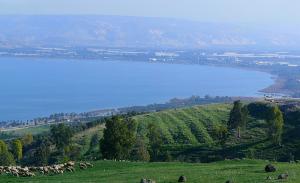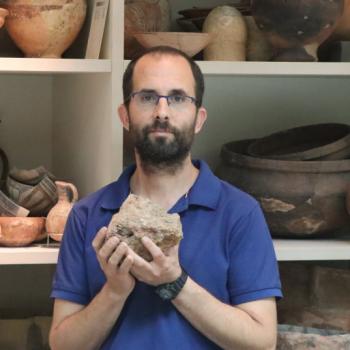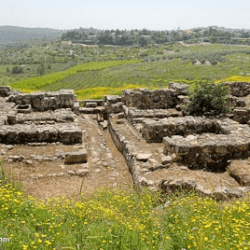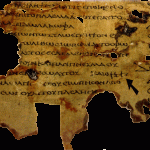Bart Ehrman is one of the most well-known and influential critics of traditional Christianity and the inspired Bible (“anti-theists”) writing today. Formerly, in his own words, he was “a fundamentalist for maybe 6 years; a conservative evangelical but not extreme right wing for maybe 5 years more; and a fairly mainstream liberal Christian for about 25.” The primary reason he gives for having lost his faith is the problem of evil (a very serious topic I have dealt with many times). He stated on 3-18-22 in a comment on his blog: “I could no longer explain how there could be a God active in this world given all the pain and misery in it.” I don’t question his sincerity, good intentions, intellectual honesty, or his past status as a Christian; only various opinions which Christians must (in consistency) regard as erroneous.
Dr. Ehrman “received his PhD and MDiv from Princeton Theological Seminary, where he studied textual criticism of the Bible, development of the New Testament canon and New Testament apocrypha under Bruce Metzger.” He has written 30 books, which have sold over two million copies and have been translated into 27 languages.
Ehrman explains that the purpose of his blog is “to disseminate scholarly knowledge of the New Testament and the earliest periods of the Christian church to a non-scholarly audience, . . . Every post is rooted in scholarship – not just my own but that of thousands of scholars who have worked for centuries on understanding the historical Jesus, the New Testament, and the origins of Christianity.” Well, the conclusions of scholars are only as good as the solidity and truthfulness of the premises by which they are operating.
This is one of a series of reply-papers, in which I will address many of his materials from the perspective of archaeology, history, and exegesis.
*****
I am responding to a portion of his article, Internal Discrepancies in the Gospel of John (6-26-18). His words will be in blue.
In John 5:1, Jesus goes to Jerusalem, where he spends the entire chapter healing and teaching. The author’s comment after this discourse, however, is somewhat puzzling: “After this, Jesus went to the other side of the Sea of Galilee” (6:1). How could he go to the other side of the sea if he is not already on one of its sides? In fact, he is nowhere near the Sea of Galilee; he is in Jerusalem of Judea.
This might seem strange to us but it wouldn’t at all to Galilean Jews in the first century who lived on the west side of the Sea of Galilee (Capernaum, where Peter’s house was and where Jesus stayed for a time). The east side was known by them as the “other side” because it was a different culture: a Gentile one. I can think of at least two American examples that are analogous to this usage.
The Grand Canyon in Arizona has, of course, two sides, or rims: the south rim and the north rim. The south rim is vastly more popular and gets ten times as many visitors. I had visited the south rim three times (hiking to the bottom on my second visit), and then in 2019 finally visited the north rim. If I were talking to anyone who had been to the Grand Canyon, I could have said, “we went to the other side of the Grand Canyon this year” and they would know exactly what I was talking about.
Secondly, as a Michigander, if I were to say that “we’re gonna visit the other side of Lake Huron / Michigan / Superior / Erie” (i.e., the Great Lakes), it would be immediately understood by anyone from Michigan that it’s the west side of Lake Michigan (in Illinois and Wisconsin), the east side of Lake Huron and north side of Lake Superior (in Ontario, Canada), and the south side of Lake Erie (in Ohio). And I have visited all those places. It has to do with the side that one is more familiar with (the Michigan side!) and/or where one lives. In that context, “the other side” is immediately understood. This analogy is almost a perfect one.
And that’s exactly what we have with regard to “the other side” of the Sea of Galilee. It was understood by Galileans that the west side was far more familiar and that referring to “the other side” was clearly the eastern Gentile side of the lake. There is still very little on the immediate shores on the east side to this day (I visited the area in 2014). Accordingly, not just the Gospel of John, but the other three Gospels all use this standard title in referring to the east side of the Sea of Galilee: which is precisely how it could be referred to as a destination from any part of the country (in this instance, from Jerusalem):
Matthew (four times): Matthew 8:18, 28; 14:22; 16:5.
Mark (five times): Mark 4:35; 5:1, 21; 6:45; 8:13.
Luke (one time): Luke 8:22.
John (three times): John 6:1, 22, 25.
The title was understood to such an extent that in all but two of fifteen instances of the phrase “other side” occurring in the New Testament, it refers to the eastern shore of the Sea of Galilee (Luke 10:30-31 being a generic, “non-title” usage). They didn’t even bother to say “east side” or “Gentile side” of the lake or whatever the region was called then (Gerasa or Gergesa, etc.) because everyone knew what “the other side” referred to. The Evangelists could have used the phrase “east side” had they chosen to (it appears 33 times in the Old Testament, though not in the new, and “east” appears eight times in the NT). But none of them chose to do that.
In any event, this objection is really “scraping the bottom of the barrel” in terms of alleged biblical “contradictions”: and I’m familiar with hundreds, having replied to a great number of them. Once we understand the reasoning and rationale above, I believe that it vanishes (alongside countless other “faux / pseudo- / alleged ‘contradictions’ “).
***
Practical Matters: Perhaps some of my 4,000+ free online articles (the most comprehensive “one-stop” Catholic apologetics site) or fifty books have helped you (by God’s grace) to decide to become Catholic or to return to the Church, or better understand some doctrines and why we believe them.
Or you may believe my work is worthy to support for the purpose of apologetics and evangelism in general. If so, please seriously consider a much-needed financial contribution. I’m always in need of more funds: especially monthly support. “The laborer is worthy of his wages” (1 Tim 5:18, NKJV). 1 December 2021 was my 20th anniversary as a full-time Catholic apologist, and February 2022 marked the 25th anniversary of my blog.
PayPal donations are the easiest: just send to my email address: [email protected]. You’ll see the term “Catholic Used Book Service”, which is my old side-business. To learn about the different methods of contributing, including 100% tax deduction, etc., see my page: About Catholic Apologist Dave Armstrong / Donation Information. Thanks a million from the bottom of my heart!
***
Photo credit: Zachi Evenor (2-5-14) Sea of Galilee: panorama of the southern end [Wikimedia Commons / Creative Commons Attribution-Share Alike 4.0 International license]
***
Summary: Agnostic Bible critic Bart Ehrman tries to make out that it’s “contradictory” to refer to the “other side” of the Sea of Galilee without being on the opposite side.














